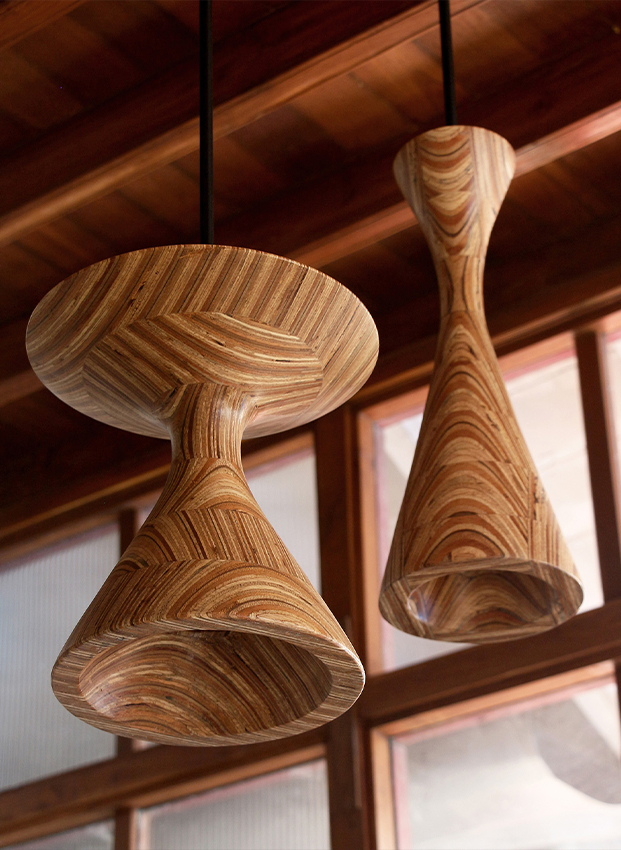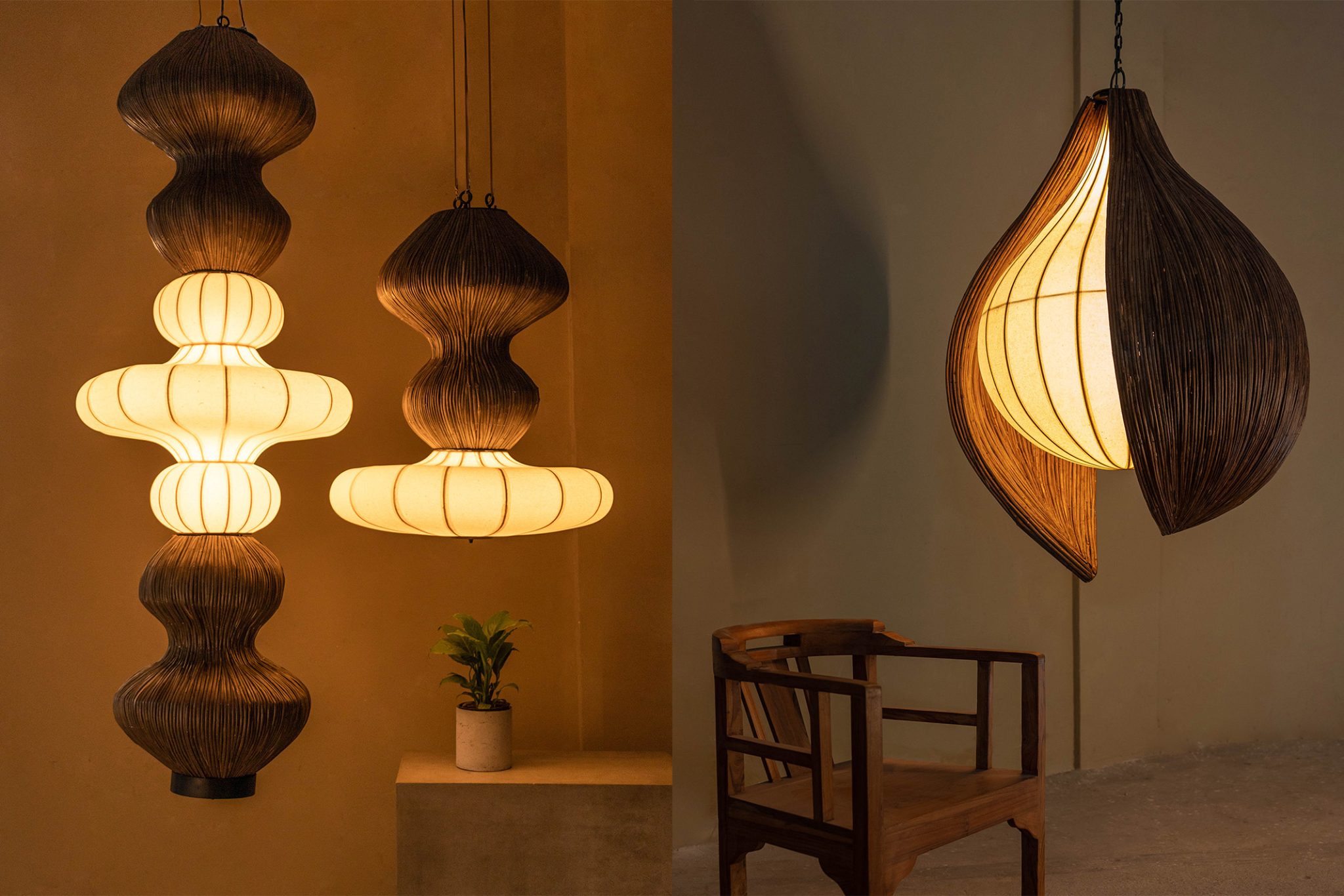#DPTalks: An Exclusive Interview With Asha Sairam On Taj Taal Kutir Design Inspiration
A key component of the guest experience at Taj Taal Kutir is the design. Asha Sairam, one of the Principals at Studio Lotus, walks us through the details of designing this expansive space.
Studio Lotus envisioned Taj Taal Kutir as an elegant urban sanctuary that provides a serene escape from the city’s din when one steps in. A medley of art and handcrafted flourishes engulfs the space. The regional artistry feels both familiar and refreshing, from the terracotta clad walls with intricate patterns of ‘Jamdani-inspired’ textile weaves and Jit Chowdhury’s indigo-tinged abstract art that define Kolkata’s deep bearing with the river Hooghly to the Art déco facades and its wistful longing for the past. This exquisite craftsmanship creates a visual thread that guides you on a captivating walk, akin to navigating through the city of Kolkata.
Taj Hospitality has gracefully evolved, unveiling a repertoire of architectural designs that connect global travellers to the folds of India’s rich architectural heritage. The relentless pursuit of preserving the rich heritage continues today with innovative design approaches, taking cues from the tableau of regional art. Taj, with its strong presence in Bengal for over three decades, now extends its impeccable hospitality with Taj Taal Kutir in Kolkata. Asha Sairam, the principal designer of Taj Taal Kutir, shares with DP the design narrative behind crafting such art-filled environments that aim to create a profoundly rich hospitality experience for guests.
Also read: What If The White Lotus Came To India? Here Are Our Dream Locations

Design Pataki: What is the role of design in luxury hospitality? What are some of the major changes you’ve seen in the industry since Studio Lotus first began designing hotels?
Asha Sairam: Design in luxury hospitality has taken a paradigm shift over the years, and its role has become more nuanced and essential. When we started designing hotels, the first being the RAAS Jodhpur, in 2008, the industry was heavily swayed by a globalised typeface of what luxury should look and feel like. Today, however, there’s a much greater emphasis on contextual design—where the habitat and culture intertwine and rise as a key to the guest experience. This shift towards localisation has made design more relevant than ever while supporting and celebrating local artists. Design is emotive now, with a more thoughtful, layered integration of regional artistry that reinforces the context for the place and takes guests on exploratory trips aiming to bring them closer to a region’s heritage and history.

DP: Taj Hospitality partnered with the prestigious real-estate group Ambuja Neotia to add a new project to its portfolio: Taj Taal Kutir, to which you were a principal designer. What was the brief to begin with?
A.S: The brief for Taj Taal Kutir was quite interesting because we were commissioned to work with an existing architectural shell developed by Salient Design Studio. Our task was to articulate the facade and design the interiors of this structure. We drew inspiration from Kolkata’s historic social clubs, popular during The Raj and, even today, constitute an integral part of the city’s social and cultural fabric. Our goal was to reinterpret this heritage in a way that marries timeless elegance and modern sophistication. Given its prime location next to Eco Park and overlooking the lake, we also aimed to create the sense of an urban sanctuary that breaks away from the formal cloisters of a city hotel and could be a perfect representation of Kolkata’s architectural heritage.

DP: Kolkata’s deep adoration for art and craft is reflected in every corner and detail of Taj Taal Kutir. Can you take us through some of the artworks that celebrate the beauty and depth of traditional art?
A.S: Absolutely! One standout feature is the reception capsule, where we’ve used hand-cut terracotta tiles to create patterns inspired by Jamdani, a traditional textile associated with Bengal’s handloom tradition. Inside the lobby, we commissioned large paintings from Jit Chowdhury, a local artist whose work intreprets Jamdani patterns and motifs to Kolkata’s urban landscape.
The guest rooms and suites are decorated with hand-painted watercolour sketch paintings depicting various streets and urbanscapes of Kolkata. Each room offers a different glimpse of the city and an instinctive awareness of the city’s rich artistic community. To add a distinct identity to the otherwise identical room corridors, we have used bespoke floral murals inspired by the flora of the Sundarbans. These motifs are layered onto the vaulted ceilings of the corridors, ensuring unique arrival experiences for each cluster of rooms.

DP: Studio Lotus’ design interventions for the facade and interiors blend eras and influences. How did you reinterpret colonial influences to fit modern spaces?
A.S: Our design approach was to honour the city’s colonial inheritance while adapting these elements to meet the needs of a modern luxury hotel. We focused on creating a dialogue between the old and the new—the Juliet balconies and black Bahama shutters, for example, are reminiscent of traditional khorkhori windows. Yet, these features are reimagined through a contemporary lens, ensuring that the spaces are not only evocative of Kolkata’s history but also resonate with today’s design sensibilities. This balance between past and present is what gives the hotel its unique character.

DP: Can you talk about the reception lounge which looks like a series of intimate booths adorned with paintings of Jit Chowdhury?
A.S: The pods are designed to be both intimate and immersive, creating a unique setting where guests can truly experience the cultural essence of Kolkata. To achieve this, we sought out the artist who could bring this vision to life. We specifically tracked down Kolkata-based visual artist and storyteller Jit Chowdhury for this commission. With his ability to give life to characters and scenarios with his intricate and context-rich illustrations, he was the perfect fit to develop this space. His canvas, crafted from delicate shola pith, the vibrant blue paint sourced from natural indigo, and his distinctive signature, created with ‘alta,’ a traditional red dye made from floral pigments, embody Bengal’s artistic and cultural heritage. Each booth in the lounge is adorned with one of his paintings— an artful paean to the ‘city of joy’. These private, cocooned pockets allow guests to soak up and appreciate the deeply layered storytelling in the artwork around them.

DP: Can you talk about the contemporary design aesthetics of the suites that have been artfully layered with regional crafts and textiles?
A.S.: In designing the suites, our vision was to create something that is both modern and deeply rooted in Bengal’s rich craft traditions. The monochrome palette serves as a canvas, allowing the intricate details and textures to take centre stage. Black-stained teakwood, combined with black and white terrazzo floors, provides a contemporary backdrop softened by introducing regional crafts such as Kantha embroidery and Ganjifa-inspired artwork. These handcrafted elements add warmth and a personal touch, ensuring that each suite feels like a unique expression of local culture.
DP: What stands out in this Taj property personally for you?
A.S: What stands out most about this project is the design and how it creates a sense of escape within the city. The hotel’s layout, with its C-shaped plan facing the lake, creates an intimate, retreat-like atmosphere that feels completely disconnected from the urban environment outside. The sound of water cascading from the reflective pool, the views of the landscaped gardens, and the tranquil ambience all contribute to a feeling of serenity and relaxation. It’s this ability to experience a private oasis amid a bustling city that I find most satisfying.


























